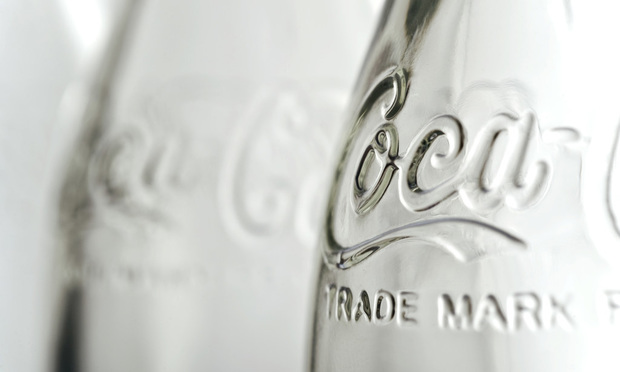Exploring the Nebulous Boundaries of Trade Dress
Trade dress is a kind of trademark that protects the overall look and design of products and packaging. The outer reaches of trade dress have always been unclear. Now that we are in the digital age, questions have been raised about the trade dress of websites and apps.
September 13, 2019 at 02:00 PM
8 minute read
 Photo by Aleksandar Andjic
Photo by Aleksandar Andjic
When thinking about intellectual property (IP), most people likely think about patents, trademarks and copyrights. In the most simplistic terms: patents protect novel and non-obvious inventions; trademarks protect a business' brand names and logos; and copyrights protect tangible, fixed works of creative expression. Trade secrets are also increasingly being recognized as the fourth main pillar of IP and can run the gamut from things like customer lists and pricing, to inventions that may or may not be patentable. Every business has some or all of these forms of IP, but what about lesser known forms of IP such as "trade dress"? Trade dress is a kind of trademark that protects the overall look and design of products and packaging. Many (if not most) product companies and retail establishments have protectable trade dress, although not all companies recognize that they have it (and therefore don't protect it!).
However, some companies choose to rely heavily on trade dress to protect their businesses. For example, Sugarfina, a candy company targeting adult consumers, created unique bento-box style packaging as part of their branding. In the past few years, Sugarfina has filed suits against multiple competitors for infringing on their trade dress, one of which resulted in a recent $2 million settlement paid out by Sweet Pete, another candy company. Trade dress is also one of the forms of IP most heavily relied upon by franchisers such as chain restaurants or hotels. Often what comes to mind when you think about franchises are the trademarks and logos but other characteristics such as the retail establishment design and the workers' uniforms are associated with the business as well (i.e., trade dress).
Trade dress, like all trademarks, can be registered with the U.S. Trademark Office. Traditionally, trade dress covered the appearance or image of packaging—which can include both the containers or wrappings as well as the labeling. In order for something to be a protectable "trade dress" it must be (1) non-functional and (2) either by itself distinctive ("inherently distinctive") or be shown to have acquired distinctiveness by proof of "secondary meaning" (i.e., that it is associated solely with the entity providing the goods or service in question). The key inquiry is whether the trade dress serves as a unique source identifier for the goods or services. Classic examples of protectable trade dress in packaging are the Coca-Cola bottle or the Clorox bottle as well as Sugarfina's bento boxes.
Over time, trade dress has expanded to include products as well. One example of a product that has a protectable trade dress is the Toblerone chocolate bar. The bar itself is the subject of several U.S. trademark registrations and has been the subject of at least one design patent. The key with trade dress is that only the non-functional aspects of the design are protectable. However, as was conclusively established by the U.S. Supreme Court in Wal-Mart Stores v. Samara Bros., 529 U.S. 205, 210 (2000), product trade dress can never be considered inherently distinctive, and secondary meaning must always be shown.
There are also some interesting considerations to be taken related to the intersection between patent and trade dress law. First, a product that is subject to a utility patent can still have a protectable trade dress (again, on the non-functional aspects). Second, a product's trade dress can also be protectable by a design patent, which is a patent on the ornamental aspects of a product's design (assuming the design is novel and nonobvious). In fact, it is frequently a good strategy to use multiple forms of IP protection for the same thing, much like Toblerone has. For example, it is helpful to have both a design patent and trade dress protection. On the one hand, it may be hard to show secondary meaning in trade dress for a product, in which case a design patent would be helpful for protection. On the other hand, a design patent is only in effect for a certain period of time, whereas a trade dress can last forever (think again of the Coco-Cola bottle).
As noted above, the trade dress in retail environments and related aspects of a business are also protectable and are especially important to franchises. A key case involving this kind of trade dress is Two Pesos v. Taco Cabana, 505 U.S. 763 (1992), in which the U.S. Supreme Court upheld a finding that a Mexican-themed restaurant had a protectable trade dress that included a "a festive eating atmosphere having interior dining and patio areas decorated with artifacts, bright colors, paintings and murals." Interestingly, the holding in the case was that a trade dress in a retail environment can be inherently distinctive, which the jury had found in the Two Pesos case, such that proof of secondary meaning is not required. More recently, Apple was able to secure a U.S. trademark registration for the trade dress for the minimalist, modern appearance of their retail stores, after extensive proof of acquired distinctiveness.
When considering whether a particular retail establishment has protectable trade dress, numerous aspects of it can be considered including the signage, exterior façade, interior decorations, floor layout, counters or point of sale displays, furnishings, menus, and attire or uniforms of the workers. Even mobile businesses can have protectable trade dress—for example, the Mister Softee ice cream trucks—and trade dress can also arise in the virtual world, such as in video games.
The outer reaches of trade dress are still unclear. While, in theory, marketing themes and branding can be part of a company's trade dress, generally that is very challenging to prove (it is difficult to establish that it is non-functional, as well as inherently distinctive or has acquired the necessary secondary meaning), and most attempts have been rejected by the courts. An example of a theme being successfully protected is Phillip Morris's use of a Western theme for selling cigarettes. On the flipside, Haagen-Dazs' attempts to protect a "unique Scandinavian marketing theme" for premium ice cream as trade dress were rebuffed, and some courts have gone so far as to state that styles of doing business, alone, can never be protected. When it comes to a retail establishment, however, the "style of doing business" may be more acceptable as part of the trade dress rather than by itself—such as the Mexican themed restaurant of Two Pesos—especially when combined with other consistent and more tangible elements.
Now that we are in the digital age, questions have been raised about websites and apps, especially since trade dress must be non-functional, and proving that sites/apps are inherently distinctive may be uniquely challenging in those environments. A few cases have suggested that websites and apps could be considered to include a protectable trade dress, but there has been little conclusive authority on trade dress in websites and apps to guide the inquiry. Challenges that arise are relevant to the medium—websites and apps may not be static—and also because it can be hard to show that the features in question are sufficiently unique to be inherently distinctive and/or non-functional.
For example, if one relies on how products are displayed on a website, is what the company doing really unique? Take shoes or any other item of apparel—it's very common to show on a website a series of photographs of shoes (singly or as a pair) by themselves without a background. A shoe company would be hard-pressed to claim that there is anything distinctive about that. But what if in every photograph there were three little pigs, and your brand name was the "Three Little Pigs" shoe company? Well maybe then you might be onto something.
Overall, when it comes to proving a protectable trade dress, two of the biggest challenges are 1) defining it with sufficient specificity, and 2) showing that it is used consistently. This is especially challenging because few companies think about trade dress early on, and often only become aware of it when faced with potential infringement. With some of the novel forms of trade dress, such as websites and apps, or even retail environments, it may also be difficult to establish that the trade dress is "inherently distinctive" or sufficiently unique by itself to convey the brand's identity to the customer, without relying upon things like the business' name or trademarks to do the work for them. As with all IP protection, the earlier in a business' life cycle these things are discussed and addressed, the easier protection and enforcement will be down the road.
Nicole D. Galli is the founder and managing partner of the Law Offices of N.D. Galli LLC, a boutique law firm with offices in Philadelphia and New York. She is also the founder and president of Women Owned Law (WOL), the first national networking organization dedicated to empowering and supporting women entrepreneurs in the law.
This content has been archived. It is available through our partners, LexisNexis® and Bloomberg Law.
To view this content, please continue to their sites.
Not a Lexis Subscriber?
Subscribe Now
Not a Bloomberg Law Subscriber?
Subscribe Now
NOT FOR REPRINT
© 2025 ALM Global, LLC, All Rights Reserved. Request academic re-use from www.copyright.com. All other uses, submit a request to [email protected]. For more information visit Asset & Logo Licensing.
You Might Like
View All
Lack of Jurisdiction Dooms Child Sex Abuse Claim Against Archdiocese of Philadelphia, says NJ Supreme Court
5 minute read
Loopholes, DNA Collection and Tech: Does Your Consent as a User of a Genealogy Website Override Another Person’s Fourth Amendment Right?

Was $1.3M in 'Incentive' Payments Commission? NJ Justices Weigh Arguments
3 minute readTrending Stories
- 1'A Shock to the System’: Some Government Attorneys Are Forced Out, While Others Weigh Job Options
- 2Lackawanna County Lawyer Fails to Shake Legal Mal Claims Over Sex With Client
- 3Florida Judge Denies Motion to Dismiss in $150M Plane Crash Lawsuit Involving Flow La Movie
- 4HSF Accounts Show US Operating Losses Last Year But Revenue Increased Slightly
- 5Sheppard Mullin, Morgan Lewis and Baker Botts Add Partners in Houston
Who Got The Work
J. Brugh Lower of Gibbons has entered an appearance for industrial equipment supplier Devco Corporation in a pending trademark infringement lawsuit. The suit, accusing the defendant of selling knock-off Graco products, was filed Dec. 18 in New Jersey District Court by Rivkin Radler on behalf of Graco Inc. and Graco Minnesota. The case, assigned to U.S. District Judge Zahid N. Quraishi, is 3:24-cv-11294, Graco Inc. et al v. Devco Corporation.
Who Got The Work
Rebecca Maller-Stein and Kent A. Yalowitz of Arnold & Porter Kaye Scholer have entered their appearances for Hanaco Venture Capital and its executives, Lior Prosor and David Frankel, in a pending securities lawsuit. The action, filed on Dec. 24 in New York Southern District Court by Zell, Aron & Co. on behalf of Goldeneye Advisors, accuses the defendants of negligently and fraudulently managing the plaintiff's $1 million investment. The case, assigned to U.S. District Judge Vernon S. Broderick, is 1:24-cv-09918, Goldeneye Advisors, LLC v. Hanaco Venture Capital, Ltd. et al.
Who Got The Work
Attorneys from A&O Shearman has stepped in as defense counsel for Toronto-Dominion Bank and other defendants in a pending securities class action. The suit, filed Dec. 11 in New York Southern District Court by Bleichmar Fonti & Auld, accuses the defendants of concealing the bank's 'pervasive' deficiencies in regards to its compliance with the Bank Secrecy Act and the quality of its anti-money laundering controls. The case, assigned to U.S. District Judge Arun Subramanian, is 1:24-cv-09445, Gonzalez v. The Toronto-Dominion Bank et al.
Who Got The Work
Crown Castle International, a Pennsylvania company providing shared communications infrastructure, has turned to Luke D. Wolf of Gordon Rees Scully Mansukhani to fend off a pending breach-of-contract lawsuit. The court action, filed Nov. 25 in Michigan Eastern District Court by Hooper Hathaway PC on behalf of The Town Residences LLC, accuses Crown Castle of failing to transfer approximately $30,000 in utility payments from T-Mobile in breach of a roof-top lease and assignment agreement. The case, assigned to U.S. District Judge Susan K. Declercq, is 2:24-cv-13131, The Town Residences LLC v. T-Mobile US, Inc. et al.
Who Got The Work
Wilfred P. Coronato and Daniel M. Schwartz of McCarter & English have stepped in as defense counsel to Electrolux Home Products Inc. in a pending product liability lawsuit. The court action, filed Nov. 26 in New York Eastern District Court by Poulos Lopiccolo PC and Nagel Rice LLP on behalf of David Stern, alleges that the defendant's refrigerators’ drawers and shelving repeatedly break and fall apart within months after purchase. The case, assigned to U.S. District Judge Joan M. Azrack, is 2:24-cv-08204, Stern v. Electrolux Home Products, Inc.
Featured Firms
Law Offices of Gary Martin Hays & Associates, P.C.
(470) 294-1674
Law Offices of Mark E. Salomone
(857) 444-6468
Smith & Hassler
(713) 739-1250







